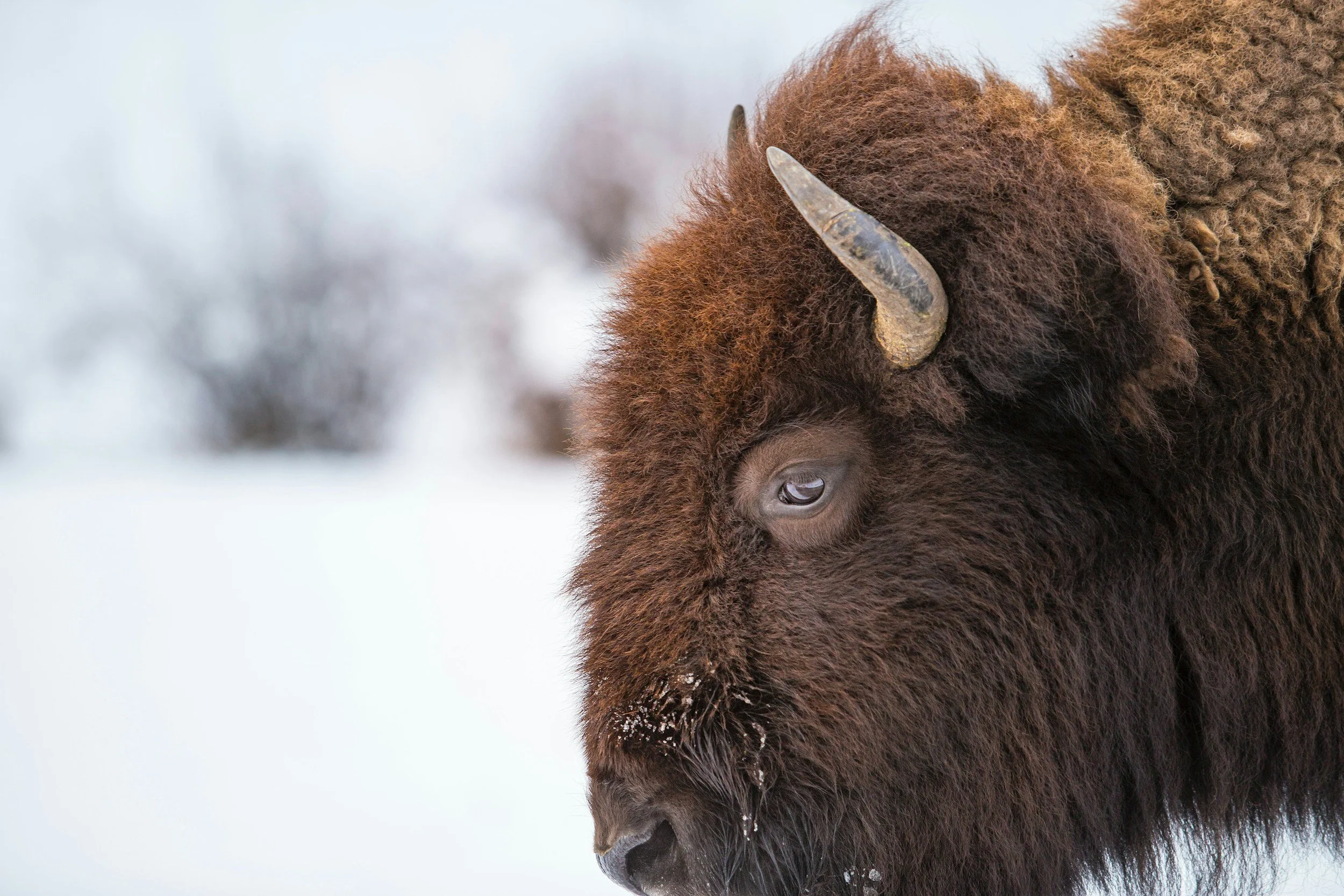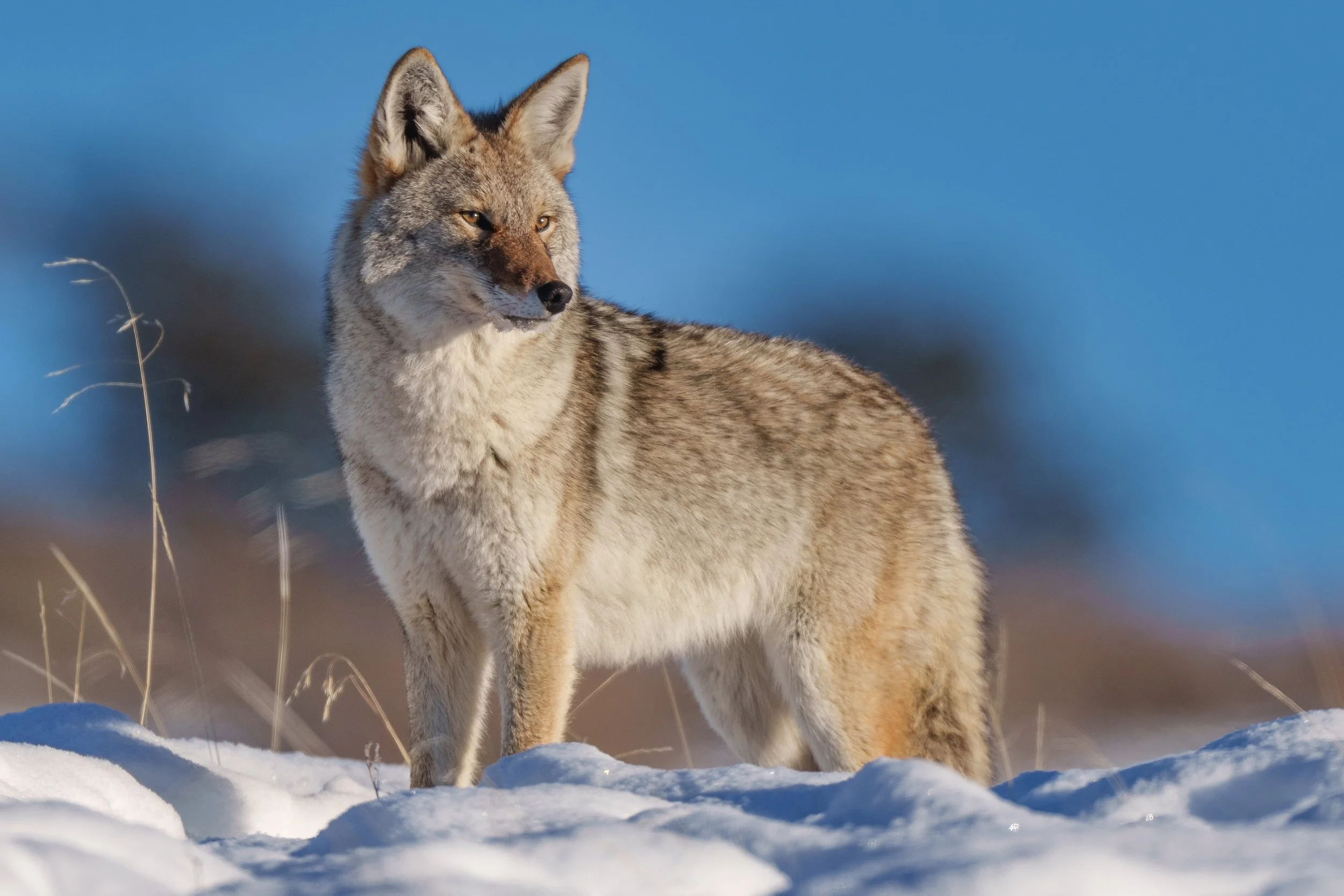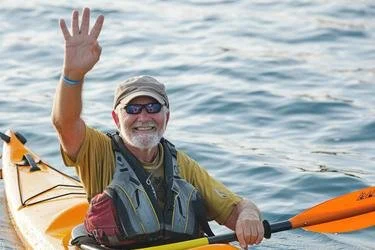Yellowstone’s Echoes Of Winter


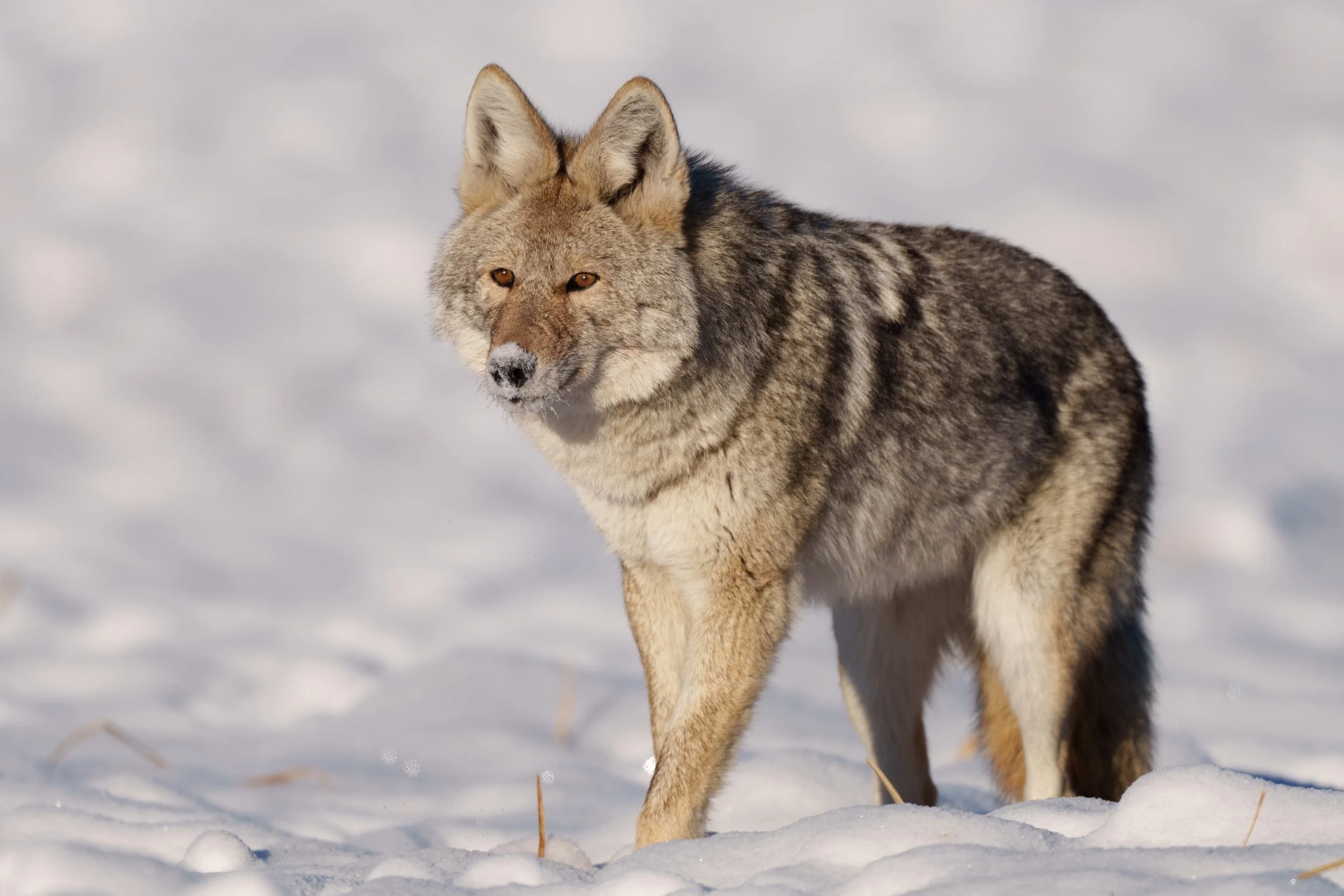

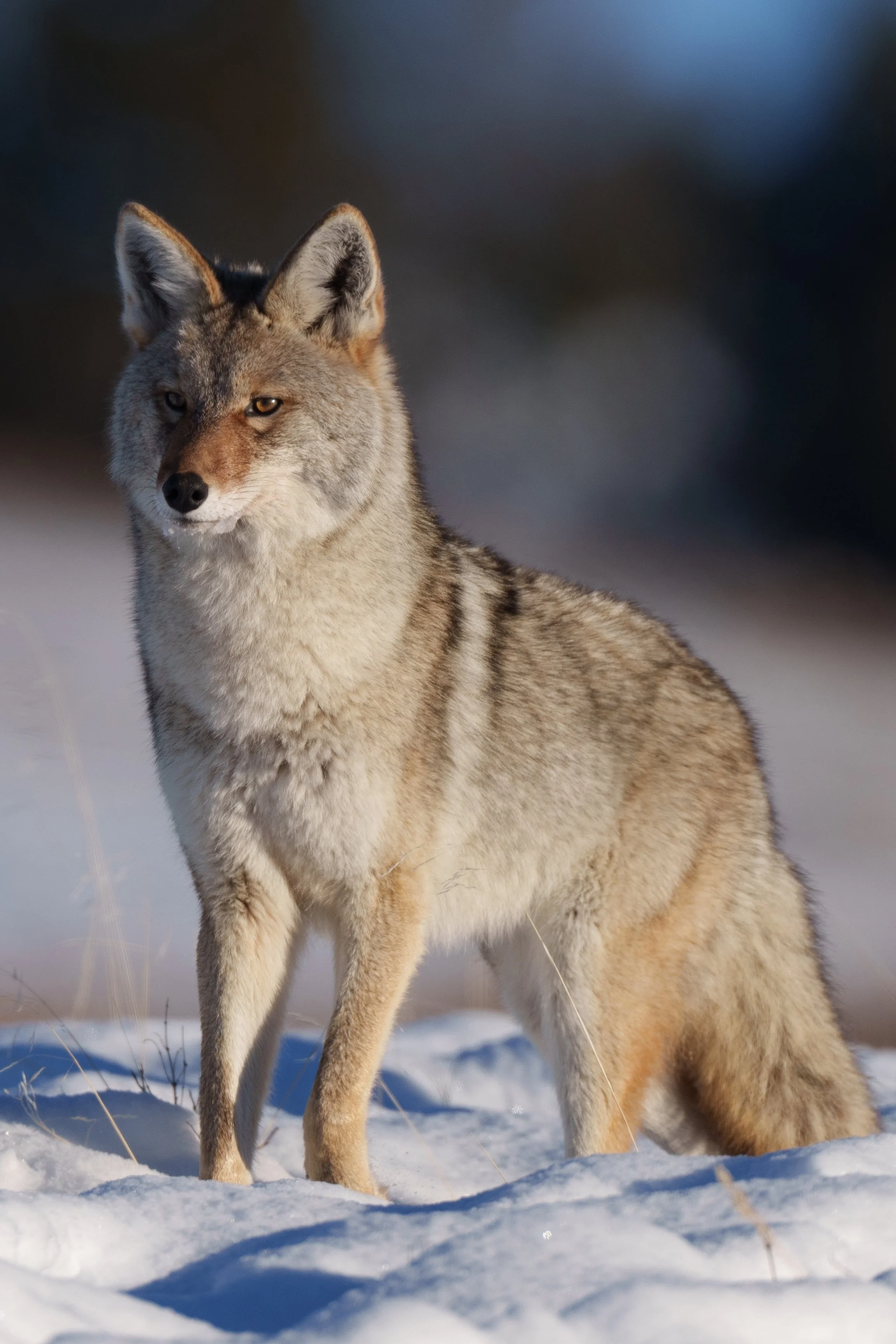


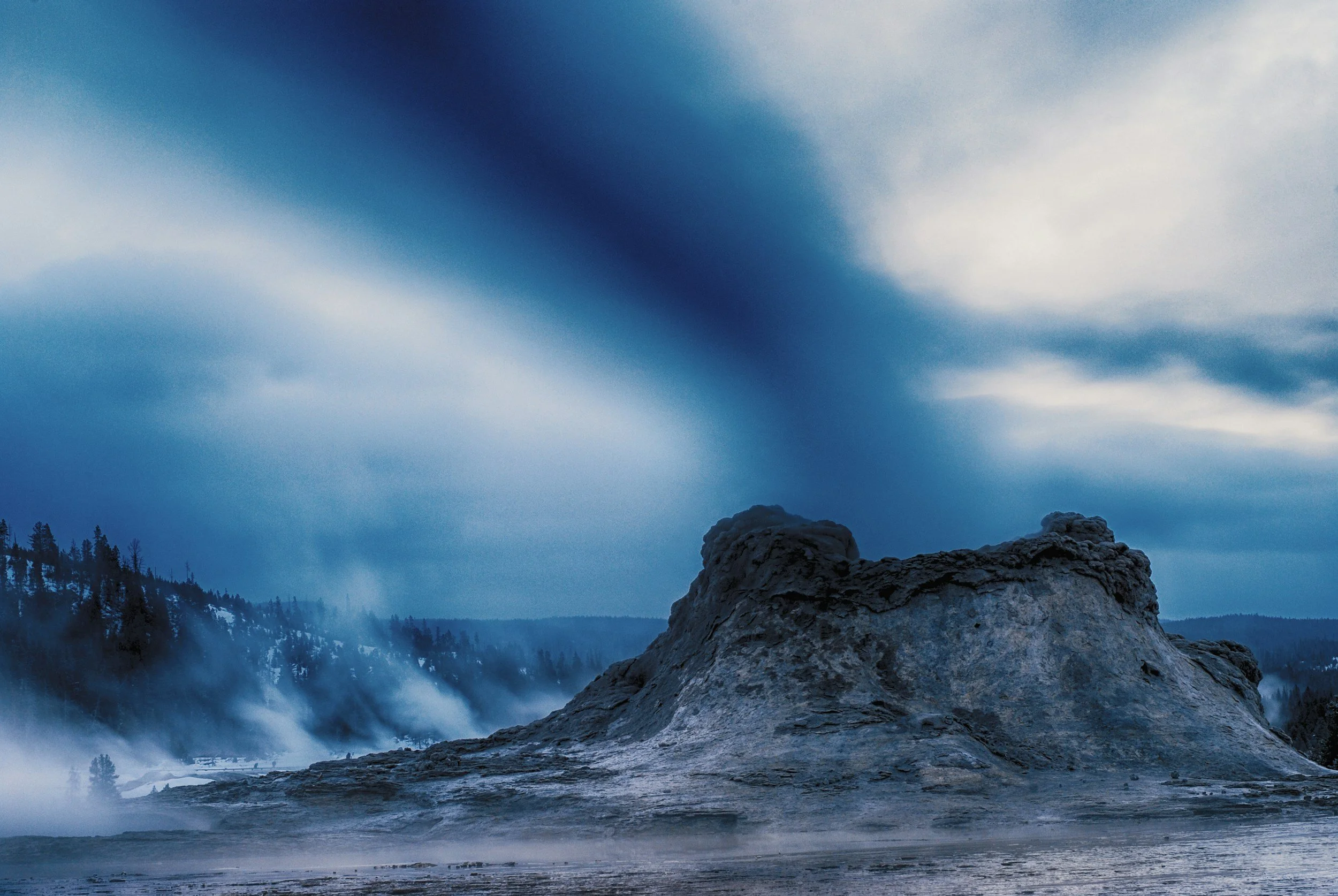
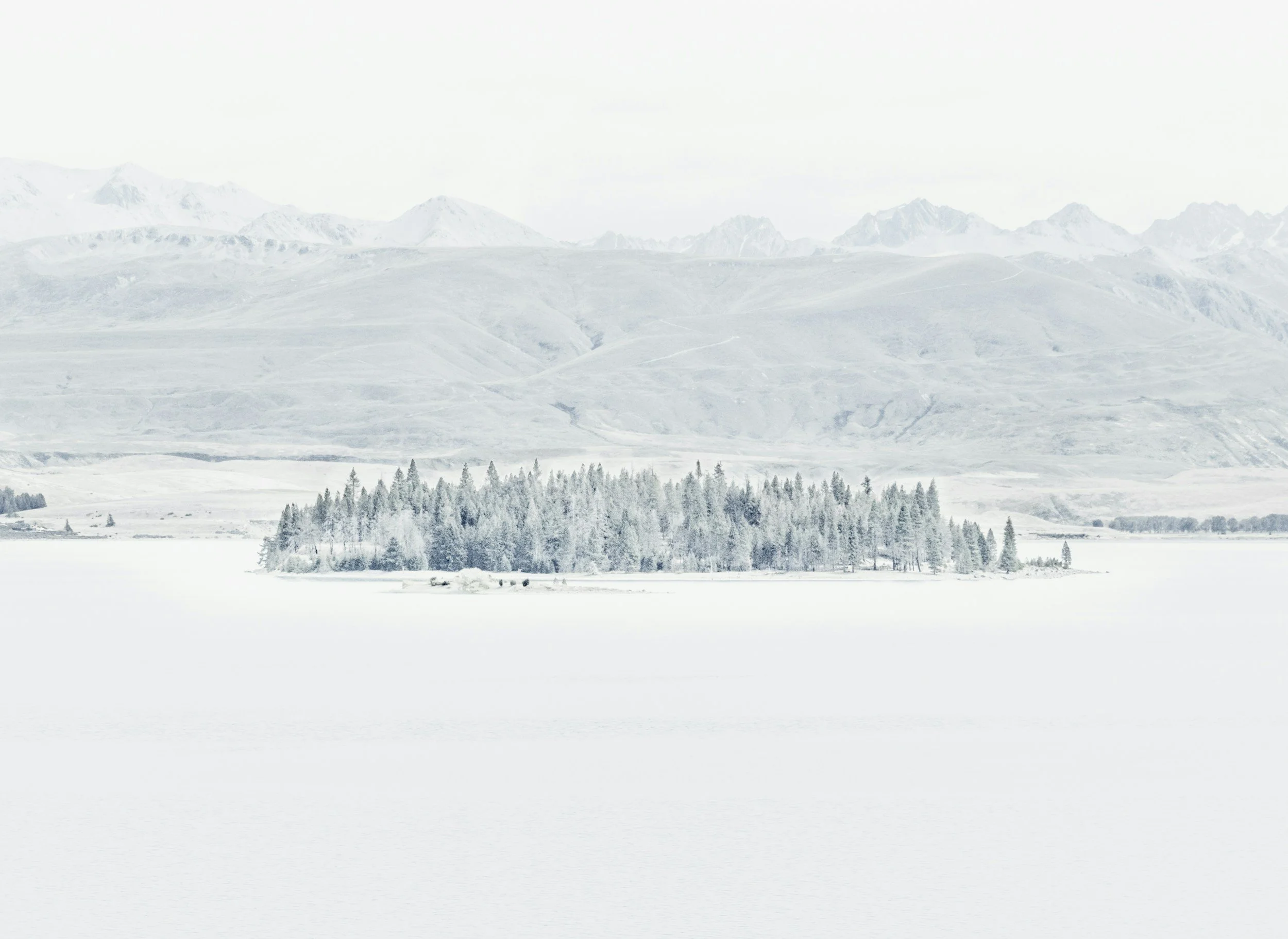

What To Expect While In The Park
Step into a world where steam rises from frozen rivers, bison roam beneath snow-covered pines, and the quiet stillness of Yellowstone in winter invites you to capture something truly extraordinary.
This isn’t just another photography workshop. With Wake Up to Adventure, every day is exactly that — an invitation to wake up to new challenges, new techniques, and unforgettable wildlife encounters.
An Intimate Workshop Designed for Photographers
This small-group experience is crafted for photographers who want more than just beautiful images — it’s designed for those who want to grow their skills while immersed in one of the most wild and inspiring landscapes on Earth.
With limited participants, there’s plenty of room for your gear and your creativity. The intimate setting allows for:
Personalized 1-on-1 instruction tailored to your skill level
Freedom to linger where the action is happening
Collaborative exploration alongside fellow passionate photographers
From beginner to pro, you’ll leave this workshop with new techniques, sharper instincts, and images you’ll be proud to print.
Potential Wildlife to Photograph Includes:
American Bison *High Probability
Elk *High Probability
Trumpeter Swans *High Probability
Bighorn Sheep *High Probability
Coyotes *High Probability
Bald Eagles *High Probability
Red Foxes *Good Probability
Wolves *Good Probability
River Otters *Good Probability
Moose *Good Probability
Mule Deer *Good Probability
Golden Eagles *Low Probability
Pronghorn Antelope *Low Probability
Pine Martens *Low Probability
Bobcats *Low Probability
Mountain Lions *Low Probability
Great Gray Owls *Low to Good Probability
Explore Yellowstone in Style
For the first portion of the workshop, we’ll travel deep into Yellowstone’s snow-covered interior aboard a privately chartered luxury snow coach. These incredible vehicles allow us to reach areas most visitors never see, giving you access to iconic landscapes and prime wildlife habitats.
You’ll have the chance to photograph:
Bison herds plowing through deep snow
Trumpeter swans gliding across icy rivers
River otters playing along steaming banks
Geysers, waterfalls, and stunning winter landscapes sculpted by snow and frost
Every day on the snow coach brings new opportunities to capture breathtaking wildlife encounters and unforgettable winter scenes.
Where Predators Roam
Later in the workshop, we’ll explore Yellowstone’s northern range, an area famous for its abundant wildlife and raw, untamed beauty. This is one of the best places in North America to photograph large predators and other iconic species in their natural environment.
We’ll search for and photograph:
Wolves navigating the frozen expanses of Lamar Valley
Red foxes diving into deep snow while hunting
Coyotes crossing open plains
Bighorn sheep, moose, elk, bison, and mule deer set against sweeping, snow-draped vistas
With fewer crowds in winter, this region often feels untouched — offering the perfect setting for intimate wildlife photography.
Hands-On Instruction From a Wildlife Specialist
This workshop goes beyond simply putting you in front of wildlife. It’s designed to make you a better photographer. Guided by professional wildlife photographer Lee Andelson, founder of Wake Up to Adventure, you’ll receive personalized, hands-on instruction throughout the trip.
You’ll learn how to:
Master camera settings for fast-changing winter conditions
Control exposure, ISO, aperture, and white balance in challenging light
Anticipate wildlife behavior to capture the decisive moment
Compose powerful, storytelling images that stand out
Work efficiently in extreme cold without missing the shot
Whether you’re just starting your wildlife photography journey or refining advanced techniques, you’ll leave this workshop with new skills, greater confidence, and images you’ll be proud to share.
Why Choose Wake Up to Adventure
Small group sizes for an intimate, focused experience
Privately chartered snow coach to reach Yellowstone’s hidden gems
Award-winning instruction from a wildlife photography specialist
Immersive encounters with Yellowstone’s wildlife at its wildest
Unforgettable memories in a pristine winter landscape
With Wake Up to Adventure, every morning begins with possibility. Every day offers a new chance to capture stunning wildlife, sharpen your skills, and create images that tell powerful stories.
Be Prepared for the Elements
This workshop involves moderate physical activity in cold winter conditions. Expect short walks through snow, icy terrain, and early mornings. Bring your sense of adventure — and your warmest layers.
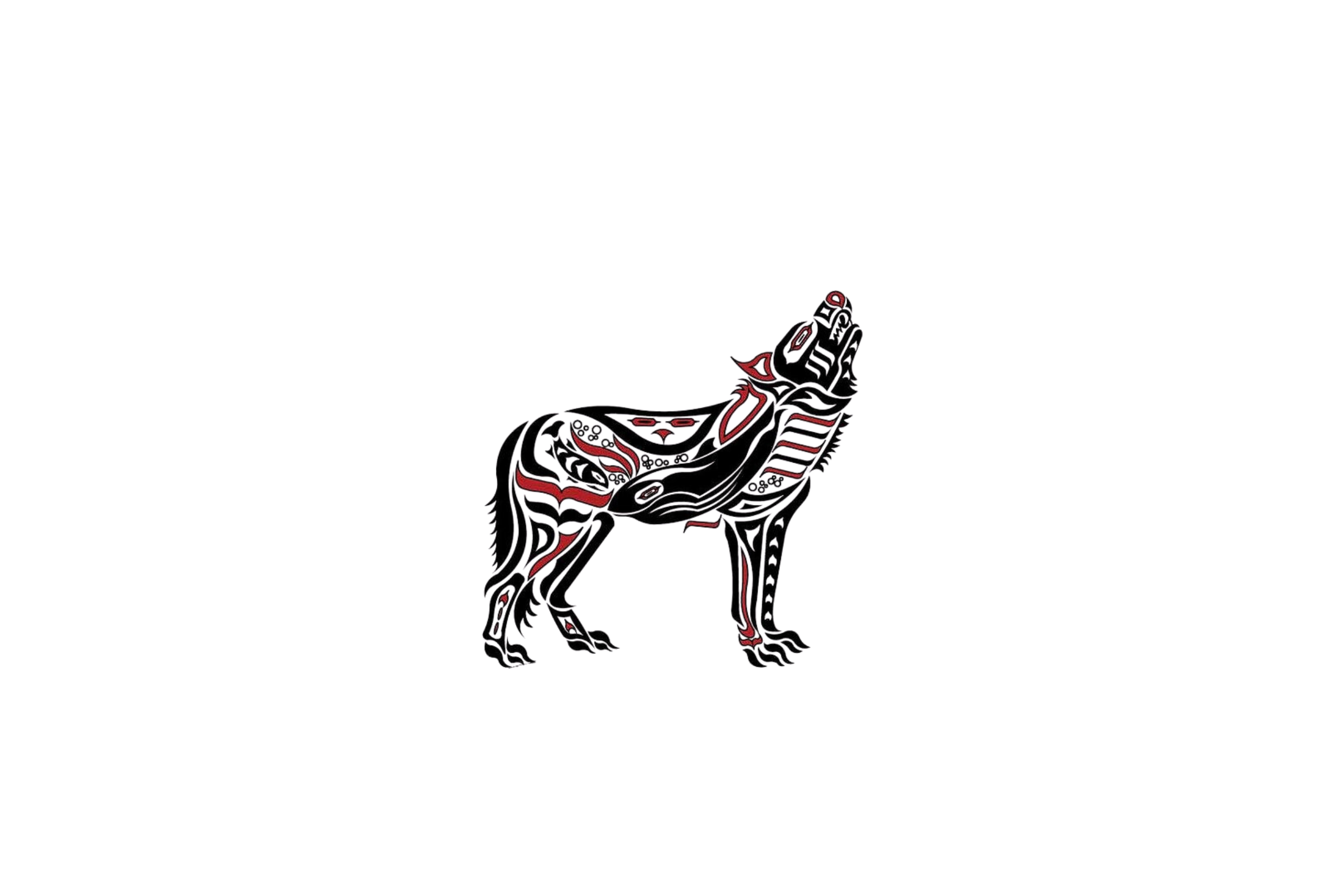
Dates, Investment and Availability
Yellowstone Photography Tours 2026
6 Days - Gardiner & West Yellowstone
Cost $6,700.00 ($1250 Deposit)
January 10th-14th, 2026 (4 Spots Remaining)
January 16th-21st, 2026 (2 Spots Remaining)
*Limited to 8 Participants
Yellowstone Photography Tours 2027
6 Days - 6 Days - Gardiner & West Yellowstone
Cost: $6,700.00 ($1250 Deposit)
January 9th-14th, 2027 (4 Spots Remaining)
January 15th-20th, 2027 (2 Spots Remaining)
*Limited to 8 Participants
Yellowstone Photography Tours 2028
2 Days - 6 Days - Gardiner & West Yellowstone
Cost: $6,700.00 ($1250 Deposit)
January 9th-14th, 2028 (4 Spots Remaining)
January 16th-21st, 2028 (2 Spots Remaining)
*Limited to 8 Participants
Note, although these wildlife tours sell out, there are often times a booking falls through. We Usually have two time slots available each day (Spring and Summer) and highly recommend signing up for the waitlist using the form below – there’s a good chance we’ll get you out on the water. However, this too is first come, first serve, so the earlier you get on the waitlist, the better your chances.

Enhancing Your Wildlife Photography Skills
While capturing stunning, once-in-a-lifetime images is a top priority, these private tours are designed to give you a personalized learning experience that matches your skill level and goals. Whether you’re just starting your wildlife photography journey or looking to refine advanced techniques, my primary focus is to help you grow as a photographer through dedicated 1-on-1 instruction.
We’ll cover the key fundamentals every wildlife photographer should know — from mastering ISO, aperture, and exposure in challenging light to customizing your camera settings to suit your unique shooting style. The goal is to make sure you’re always prepared for that perfect shot, no matter the conditions.
A major part of wildlife photography is understanding animal behavior, and I’ll teach you how to anticipate movements and reactions to increase your chances of capturing powerful, storytelling images. Whether you’re tracking an orca surfacing in shifting light or locking focus on a sea lion diving through waves, you’ll learn how to adapt quickly and make the most of every opportunity. We’ll cover everything from selecting the right shutter speeds for action shots to achieving tack-sharp focus on moving subjects.
This immersive, hands-on experience is built entirely around your learning needs. My passion for teaching and wildlife photography comes through in every moment on the water. By the end of the tour, you’ll leave not only with an incredible collection of images but also with newfound confidence, sharper skills, and a deeper connection to both wildlife photography and the Salish Sea ecosystem.
Home base at Friday Harbor provides a charming and convenient setting, with excursions carefully planned to maximize your time on the water and your chances of incredible wildlife encounters. Complementing the hands-on shooting experience, evening workshops will refine your post-processing skills in Lightroom and Photoshop, ensuring your images are as stunning as the memories they capture.
Perfectly blending education, adventure, and camaraderie, this tour promises not just incredible photographs but an unforgettable experience in one of the Pacific Northwest’s most magical locations.
“Every Moment Can Be An Adventure - Capture It!”
Captured Moments, Lasting Impresions
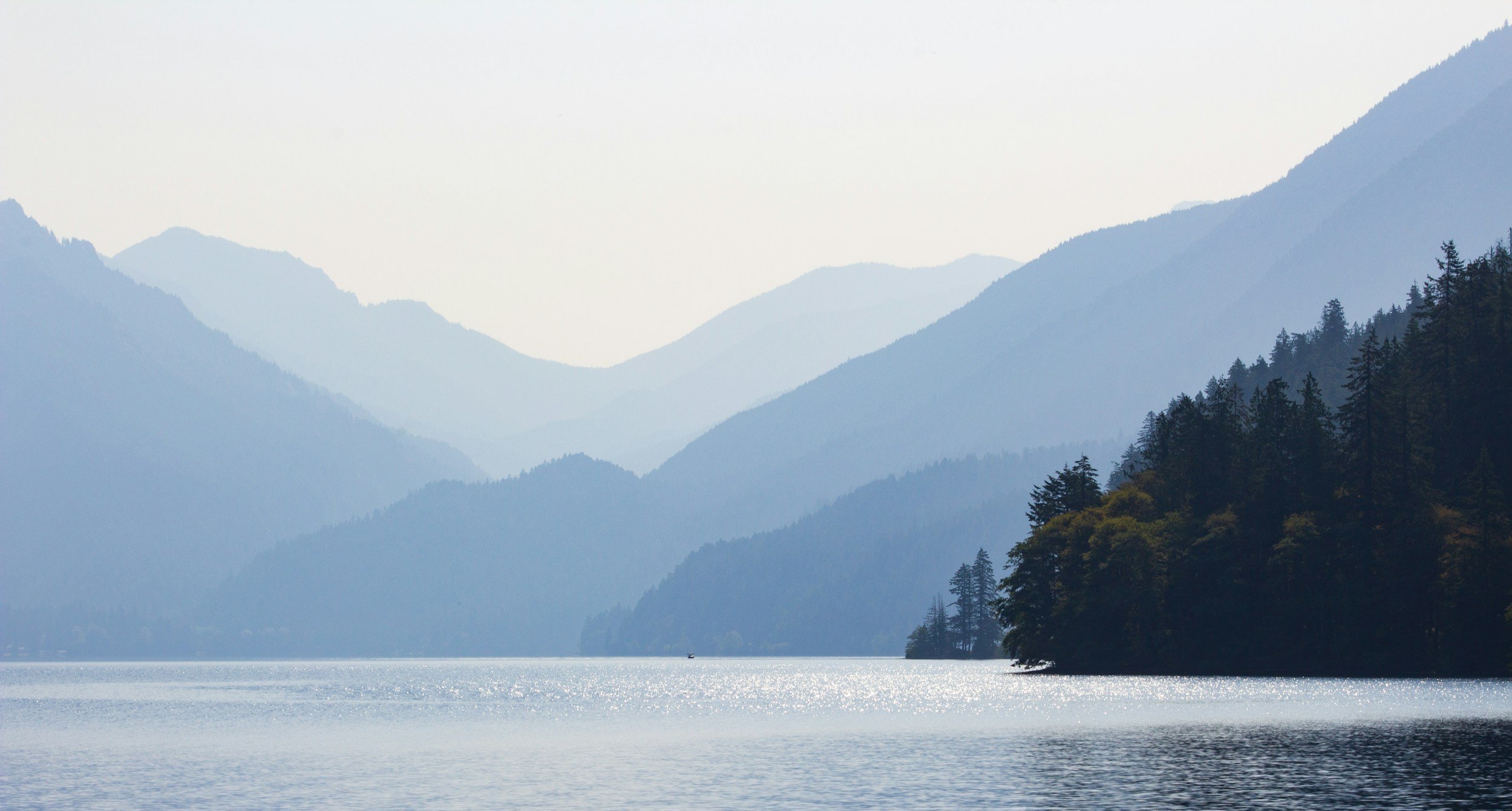
Photography Workshop FAQ’s
-
There are only 10 seats available for each photography workshop. The Vessel is US Coast Guard certified for 18 passengers, however wanting to maximize space for each photographer, we have limited the amount of seats available.
-
If there were two things I could control on every wildlife photography tour it would be weather and gaurantees of wildlife sightings. Unfortunately I can’t but keep in mind every time we head out into this dynamic ecosystem we have about an 80% chance of seeing cetaceans (whales), especially Orcas. The San Juan Islands are truly an incredible place where you can reliably find Orcas and other marine species all year. I imagine a lot of you would like to join in hopes of capturing images of orcas and I will do everything in my power and skillset to set you up for those opportunities. Workshops are offered May through October as those months have the greatest odds of finding the most species. Please understand whales can travel well over 100 miles in a single day and we simply do not just head over to “whale cove” to view and photograph these incredible mammals. Our captain will also be chatting with other boats out on the water that day sharing recent sightings too.
-
Yes! We will have a variety of snacks and beverages on the boat as well as a selection of lunch options for you to choose from a week or so before the workshop. I will email/contact you before you arrive to make your selection for the day. We will have lots of snacks for you to munch on, we don’t want you to get hungry over the 6 plus hours we will be out on the water. Please bring any snacks or beverages you like. Alcohol is not permitted.
-
Keep in mind this is a dedicated wildlife trip, so you’ll definitely want your large zoom lens. Using full frame, you’ll want at least 100-400mm and possibly bringing a teleconverter for extra reach. One of the super zooms is a good choice like the Nikon 200-500, Sigma 150-600, Tamron 150-600, or Canon 100-400. If you happen to have a big prime that’s awesome, however I find those to be to bulky and heavy to be handholding all day out on the water. Fixed prime lenses can be challenging as you are locked into a certain focal length and acquiring your target within the perfect frame might not be possible.
Tripods and Monopods are not allowed onto the boat as they can create a tripping and safety hazard but bring them along to the island as there can be a fantastic opportunities for a killer sunset landscape image!
I also highly recommend taking a short zoom for snapshots and it’s always possible a good landscape opportunity will crop up. Something like a 24-70 would be just fine.
Since it can be rainy at times, you also may want some sort of “rain jacket” for your gear (or at least borrow a towel from your hotel room).
When it comes to cameras, you’ll want as new of a DSLR as you can muster, preferably something from the last 3~4 years. We end up in a lot of tricky lighting scenarios, often requiring good dynamic range and good high ISO. So, the newer, the better. Any current Nikon or Canon is just fine.
You can always rent lenses and other gear before you send thousands of dollars on bigger glass. I recommend taking a look at rental sites like lensrental.com which offer affordable equipment rentals for photography workshops just like this. Oh, and don’t forget extra memory cards and batteries!
-
With plenty of elbow room and unobstructed views, boats J1 and J2, are the newest and most comfortable vessels from San Juan Island. The boats feature theater-style seating and a cabin for comfort in all conditions. There is excellent viewing from the outdoor bow and stern viewing decks, as well as unparalleled indoor visibility through the large cabin windows that fully open up. You are never seat-bound and can move freely between the cabin and all viewing areas. These boats have been specifically designed for wildlife photography tours all while keeping you incredibly comfortable!
-
If you feel like I have provided an excellent workshop tips are always appreciated but never expected. I would ask that you consider our Captain first as they are the ones that have kept us safe out on the water and have the wealth of knowledge when it comes to photographing these critters we came to see!
-
Yes. We may choose to rearrange / modify the schedule based on weather, unforeseen circumstances, or just better opportunities for you to get a better selection of images. The primary goal is for YOU to get as many great images as possible, and any schedule change will be based on meeting that goal.
-
Drones are not allowed on this photography tour. There are strict guidelines to fly drones around marine mammals in US waters and even stricter ones over the boarder in Canada. Please don’t ask for exceptions.
-
There are several ways to get here from Seattle, Vancouver, Victoria and the surrounding areas. Each of them are a beautiful adventure in their own right.
The most economical way to get here is on the Washington State ferry. The ferry departs from Anacortes, which is about a two hour drive north of Seattle and about two hours south of Vancouver. The ferry is a beautiful one hour ride through the San Juan Islands. You can drive your car onto the ferry or walk on.
If you are just coming to San Juan Island for the day, we highly recommend that you leave your car at the ferry terminal in Anacortes and walk onto the ferry. The ferry lands in downtown Friday Harbor and our tour departure location and all of the amenities in the town of Friday Harbor are walkable from the ferry landing. If you are bringing your car on the ferry we strongly encourage making a vehicle reservation. Walk-on passengers do not need a reservation.
The fastest way to get here is on a commuter plane or float plane with a company like Friday Harbor Sea Planes, which offer one way and round trip flights to Friday Harbor. It is a quick, gorgeous 25-30 minute flight up through Puget Sound and the islands.
Flights are also available from other mainland and Vancouver Island locations by regional operators such as Kenmore Air, San Juan Airlines, Westwind Aviation and Rite Bros.
Feel free to ask us if you have questions about the best way to get here from where you are starting your journey.
-
San Juan Island has many great hotels and accommodations right in town. My favorite place to stay is Friday Harbor House. They offer beautiful rooms, some looking over the harbor and have a great restaurant. If you are looking for something a little more budget friendly, I recommend Earth Box or Web Suites. Friday Harbor also has some very charming Bed and Breakfast, one of my favorite being the Trumpeter Inn! You can also find some great AirBNB’s too! Most of these accommodations are within walking distance of our meeting place and the dock from which we depart.
-
If you have some extra time or love getting up early for some of our feathered friends, there are some great opportunities for wildlife photography all over the island. First I’d make my way down to the south end of the island and check out Cattle Point Lighthouse and Jacksons Lagoon. There you can find active foxes looking for their next meal and many different bird species hanging around the small lagoons. There are also great hikes in the area, all relatively flat with stunning views. If you find yourself on the south end at sunset, its a great place to have a beach fire in one of the fire pits at South Beach. If your looking for the best sunset on the island, I’d head to the westside to Lime Kiln State Park. There you can photograph the lighthouse and the setting sun and maybe even get a glimpse of whale out on the water. If you are interested in learning more about the history of the area and the island, visit the San Juan Historical Museum in Friday Harbor, the interpretive centers at American Camp and English Camp National Parks and Lime Kiln State Park. The island is very bike friendly and has some great routes to explore. The island shuts down for the most part pretty early but has some great dinning options. I love Down Riggers and Coho for dinner and Friday Harbor House and Madrone Cafe for lunch. There are plenty of small coffee shops and bites to eat in town. One of the most fun activities you can do on the island is at night! There are several outfitters that do bioluminescence kayak tours that can be a real treat to see. This is dependent on weather and the time of year so be sure to check when the best time is for an awesome evening out kayaking!
-
It is always cooler on the water, even when it feels warm on shore, and especially in the late afternoon and evening. In the Pacific Northwest, we believe in layers! Even for summer adventures, bring layering options such as a sweatshirt, jacket and long pants. For evening tours you will want to bring that extra layer. For Spring, Fall and Winter tours, bring heavier layers; a heavier warm jacket, hat, gloves and close-toed shoes. You will be more comfortable having too many layers than not enough.
With an average of 247 days of sunshine, we always recommend that you bring sunglasses.
-
We go out rain or shine, but our tours are weather dependent. We do not go out in excessively heavy rain, big seas or thick fog. We are inland from the Pacific coast and in a rain shadow, so we rarely need to cancel tours. In the event it does rain during your tour, our boat has an enclosed cabin with indoor seating and wrap around windows for viewing.
-
The waters around the San Juan Islands are inland and protected from the ocean swells of the open Pacific. And with hundreds of islands in the San Juans and Canadian Gulf Islands, we are in sight of land throughout our tour. Because of these two factors, sea sickness is generally not an issue. If you are especially prone to motion sickness, we recommend taking your preferred remedy prior to your tour. In the event someone needs a little extra support, we also carry ginger candy, ginger tablets and sea-band acupressure bracelets onboard.
-
Yes! The vessel has a head, or marine bathroom, for your convenience.
-
If we have wildlife reports in Canadian waters the day of your tour you will not need your passport to enter while we are on the boat. We are allowed into Canadian waters but if you do plan on spending some time on land in Canada before or after your workshop be sure to bring your passport along.

